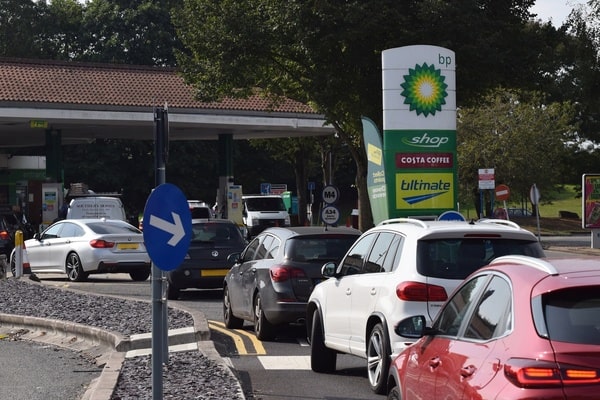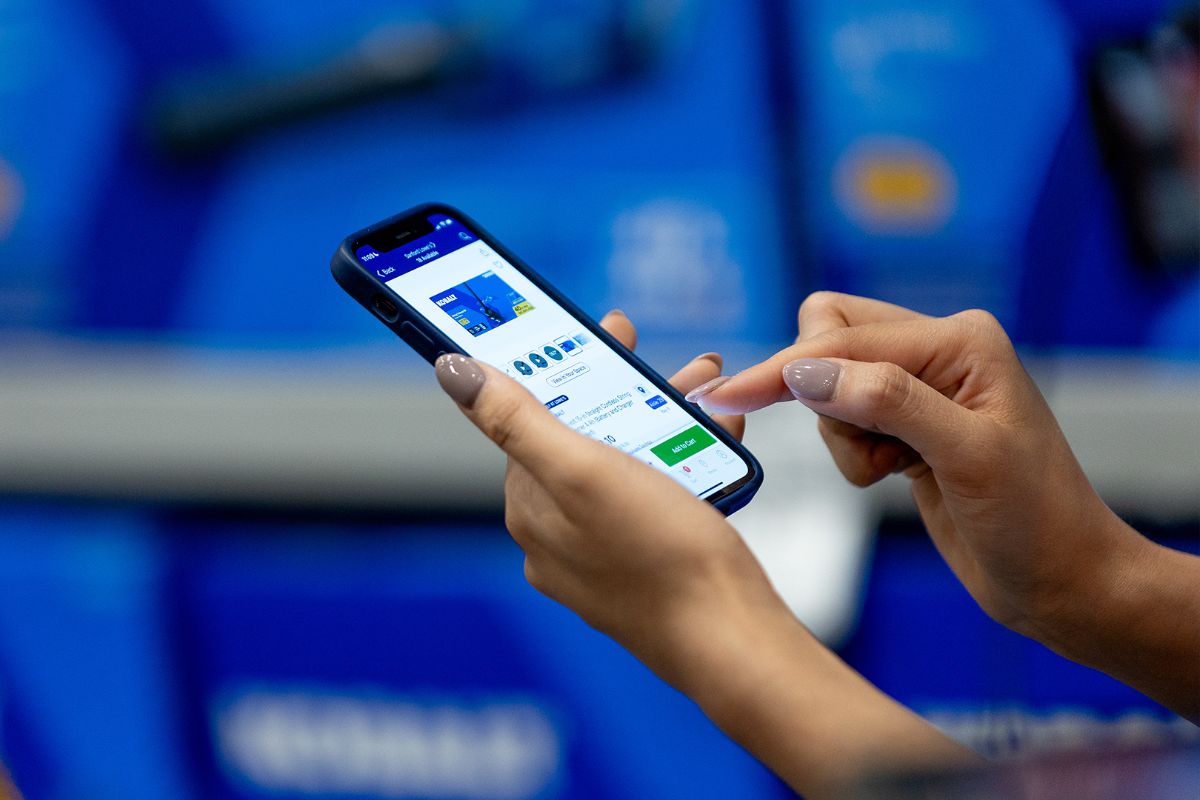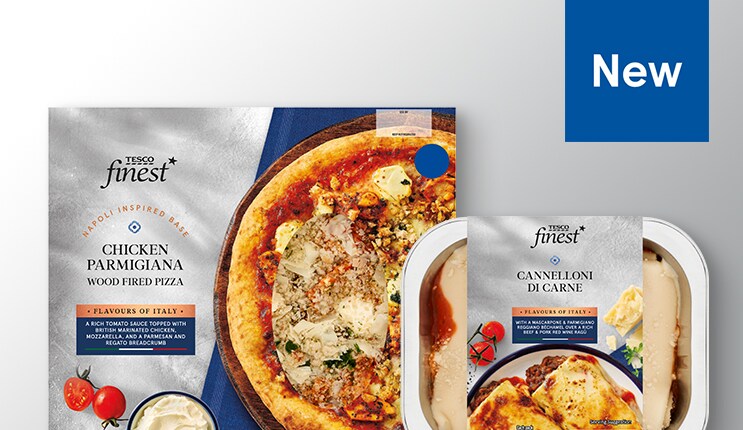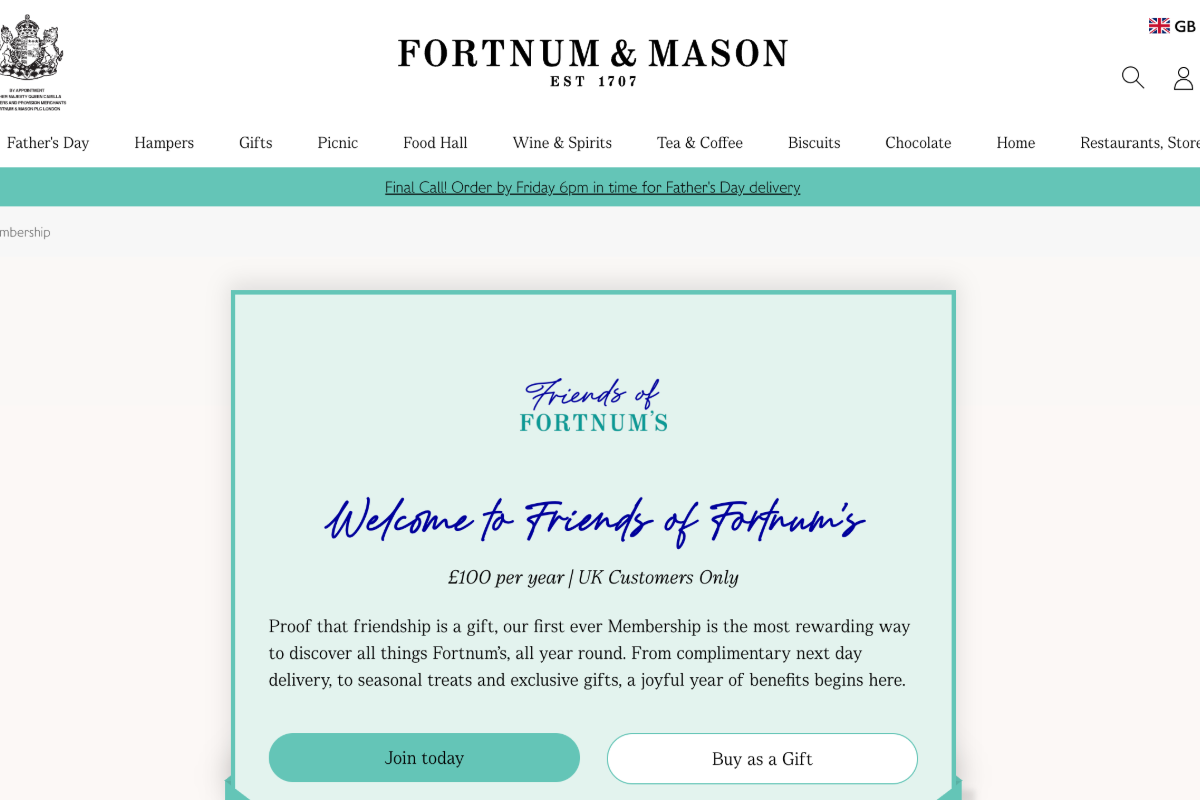Shoppers spent less online and across channels in September as confidence appeared to take a knock – perhaps following fuel shortages and wider supply chain issues.
More than 40% of sales took place online last month, the latest British Retail Consortium (BRC) figures suggest. But shoppers spent less via ecommerce than a year earlier, and only slightly more on retail purchases via any channel. Meanwhile, Barclaycard data suggests that while shoppers spent more on essentials and on entertainment, its consumer survey found 90% concerned about rising costs. The BRC-KPMG has now reverted to reporting its figures compared to 2020 – and including some comparisons with pre-pandemic 2019, while Barclaycard is comparing its figures to 2019, on the basis that it offers a more useful comparison.
BRC-KPMG: four in 10 purchases online in September, but spending is reined in
Shoppers made 40.1% of non-food retail purchases online last month, according to BRC-KPMG Retail Sales Monitor figures published today. That’s below the 44.9% of retail purchases that took place online in September 2020, but remains 9.7% above the 30.8% that were online in pre-pandemic September 2019.
At the same time, online non-food sales fell by 7.3% in September, against growth of 36.7% in September 2020. That’s below the three month average decline of 4%.
Retail sales across all channels grew by 0.6% in total in September 2021 compared to September 2020,. That’s below trend across both three months (+3.1%) and 12 months (+9.8%). Shoppers spent 5.8% more than they did in the same month in pre-pandemic 2019.
However, sales were down on a like-for-like (LFL) basis, which strips out the effect of store – and business – openings and closures. In September 2020, they had risen by 6.1%.
In the three months to September, in-store non-food sales grew by 10.8% in total – compared to the same period last year – and by 6.6% LFL. However, in-store sales remained 9.6% below the same period in 2019, and 1.6% lower LFL.
Helen Dickinson, chief executive of the BRC, says: “September saw the slowest retail sales growth since January, when the UK was in lockdown. There are signs that consumer confidence is being hit as the fuel shortages, combined with wetter weather, had an impact in the second half of the month. This had a bigger effect on large purchases such as furniture and homeware. In-store purchases regained ground, and sales growth continued to strengthen for footwear and fashion, particularly formalwear with many workers returning to the office this autumn. While online sales were down on the previous year, they remain significantly above pre-pandemic levels, reinforcing the permanent changes in consumer behaviour.
“An uncertain backdrop and slower growth means the fourth quarter is looks challenging as the economic recovery is dependent on strong retail sales during the festive season. Retailers, farmers and manufacturers are already making preparations to ensure enough food and festive gifts move through the supply chain in time for Christmas. Unfortunately, the lack of drivers is hindering these preparations and increasing costs, which will eventually be reflected in higher prices. Retailers are working hard to recruit and train thousands of new British drivers, but in the interim Government needs to urgently extend its visa scheme to address the shortfall of 90,000 drivers. Without swift action, customers face disruption and frustration this Christmas.”
Paul Martin, UK head of retail at KPMG, says that back to school and back to office purchases rose during the month, but that the continued slowdown in spending meant sales grew by less than 1% growth – and fell back in every category other than apparent and beauty, with online sales down by 2.2%.
“Fuel panic buying bought into sharp focus the impact supply chain bottlenecks and labour shortages can quickly have for consumers,” says Martin. “The energy crisis is set to have further impact on inflation levels, putting pressure on household spending and retailers will be hoping for some good news from the Chancellor in his Budget to help them manage rising costs.
“As we run into the crucial Christmas shopping period, retailers continue to face staffing pressures and supply chain issues, with challenges getting product into the UK and getting goods in to customers‘ hands. This may feed into limited availability of certain products and the spectre of price rises remains as retailers pull out all the strings for Christmas. Consumers are expected to start shopping earlier to bag those items already being reported as potentially out of stock by December and successful retailers will have to work very hard to ensure the right availability of the right product at the right price to satisfy the requirements of an ever more demanding customer.”
That said, Hotter Shoes’ chief commercial officer Victoria Betts says the figures are surprising. “The downturn reported is not a trend we are experiencing across footwear,” she says. “We have seen a 32% rise in sales for September compared to last year, and a 20% rise on August with growth experienced in all markets, buoyed by our new range launch in September.
“In contrast to the BRC’s reported fall in online non-food sales, we are also reporting an 18% annual rise in online sales, which comes despite our physical stores having reopened and without lockdown measures forcing a drive to shop online. The sector has had an incredibly tough year and it would be naive to assume that there aren’t pressures across the industry. However, while there may be a post-pandemic recovery stall for many businesses, this is not something we are experiencing and isn’t reflective of retailers across the board.” She says Hotter’s change of focus to sell predominantly online has helped it to navigate “turbulent economic periods”.
Fears of lower shopper confidence were also reflected in the IGD Shopper Confidence Index, which recorded its largest monthly decline in September. Susan Barratt, chief executive of IGD, the grocery analyst, says: “Concern around food price inflation has now reached its highest level since March ’13, with IGD’s ShopperVista revealing that 85% of shoppers expect food and grocery prices to get more expensive in the year ahead, up from 79% in August ’21. With inflation rising and plans for increased taxes, 31% of shoppers expect to be worse off financially in the year ahead compared to 22% in August.”
Food sales grew by 2.3% in total and by 1.7% LFL in the three months to September – below the 12 month average growth of 4.9%, according to the BRC figures.
Barclaycard: essential spending rises – especially on fuel
The amount shoppers spent on essential items grew at its fastest rate in September since early 2019. Rising fuel demand – and prices – meant that spending in this area rose by 11.1%, compared with the same period in 2019. Supermarket spending rose by 14.7% at the same time. A parallel study of consumer sentiment found that 90% are concerned about the rising price of everyday items, while 46% report seeing empty spaces on shelves – following the shortage of HGV drivers. Some 18% said they found it harder than usual to find fresh fruit and vegetables.
Overall, consumer spending rose by 13.3%, with spending on non-essential items up by 12.9% last month, compared to the same time last year. The number of survey respondents who felt confident about being able to buy non-essential items fell to 59% from 63% in August. That’s the lowest this figure has been since February 2021. Spending in discount stores rose by 29.3%, and 56% said that if energy prices rose sharply it would make it harder for them to spend on non-essentials.
Raheel Ahmed, head of consumer products at Barclaycard, says: “The return of pupils and workers to schools and offices helped many sectors to see strong uplifts in September. Pubs, bars & clubs and the entertainment industry benefitted from post-work socialising, while international travel was given a boost as holidaymakers jetted off to warmer climes to squeeze in their last trips of summer.
“Consumers are, however, starting to feel the impact of rising prices on their personal finances, which is also hampering confidence levels. While this is causing some Brits to seek out value in their purchases, as the festive season approaches, we expect spending to gradually gather pace as shoppers start buying gifts and preparing for gatherings with loved ones.”









